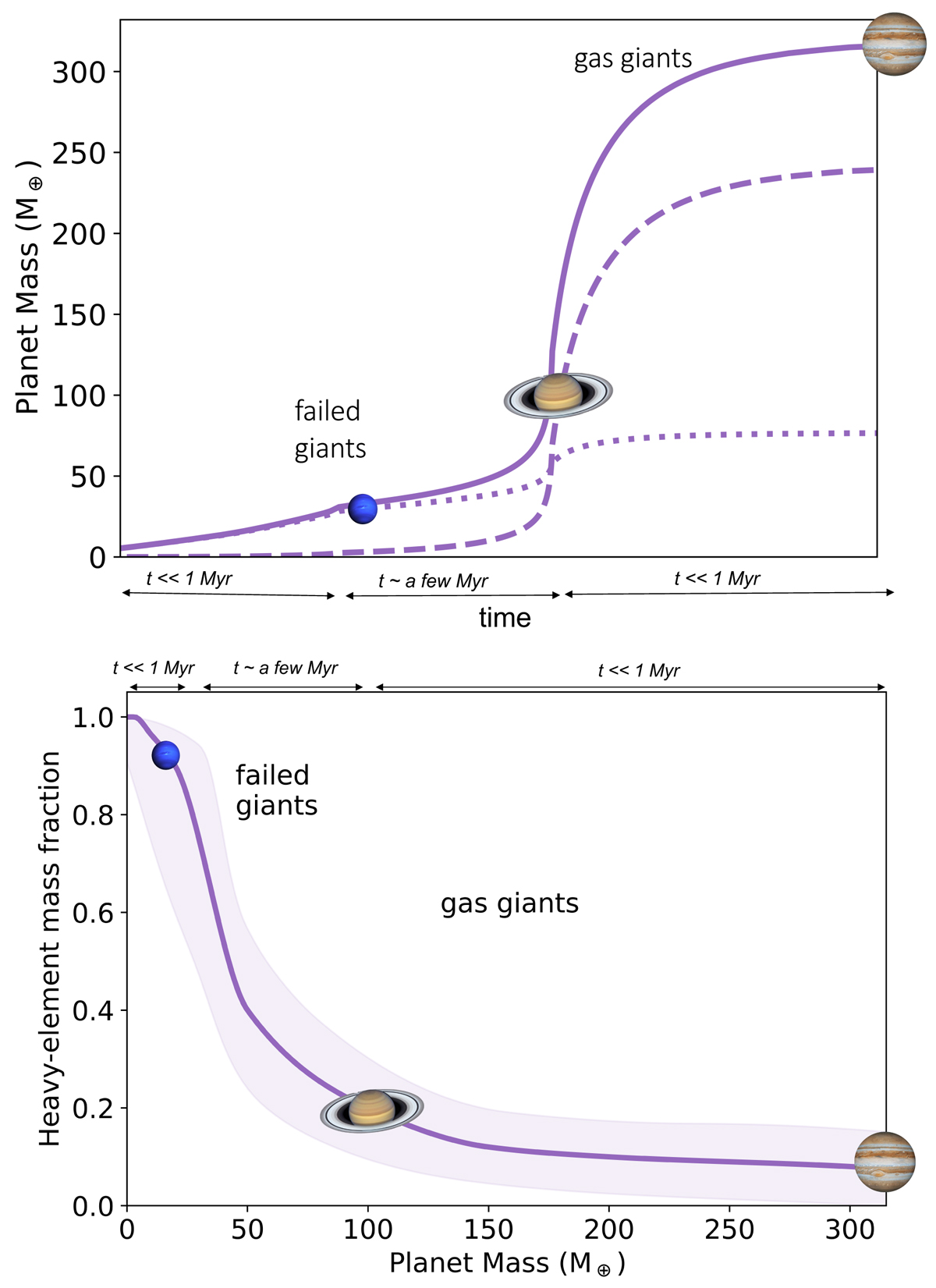Fig. 1.

Download original image
Planetary growth and expected composition. Top: planetary mass as a function of time. The dotted and dashed lines correspond to the heavy-element and H–He mass, respectively. The curve is based on formation calculations (see Helled et al. 2022b for details). Bottom: planetary bulk metallicity (represented by the heavy-element mass fraction) as a function of planetary mass until a Jupiter mass is reached. A large shaded area is included to indicate the large uncertainties associated with the details of the formation models. Interestingly, the expected bulk compositions of the outer planets are consistent with this curve. This model includes planetesimal accretion after core formation, which delays cooling and, therefore, rapid gas accretion (Alibert et al. 2018; Venturini & Helled 2020). Also indicated is the mass where gas accretion is initiated after a few million years of growth (approximately Saturn’s mass) and the order of magnitude of the expected formation timescales. The plots clearly show that low-mass planets are expected to be heavy-element dominated in composition, while planets more massive than ∼100 M⊕ are H–He-rich.
Current usage metrics show cumulative count of Article Views (full-text article views including HTML views, PDF and ePub downloads, according to the available data) and Abstracts Views on Vision4Press platform.
Data correspond to usage on the plateform after 2015. The current usage metrics is available 48-96 hours after online publication and is updated daily on week days.
Initial download of the metrics may take a while.


